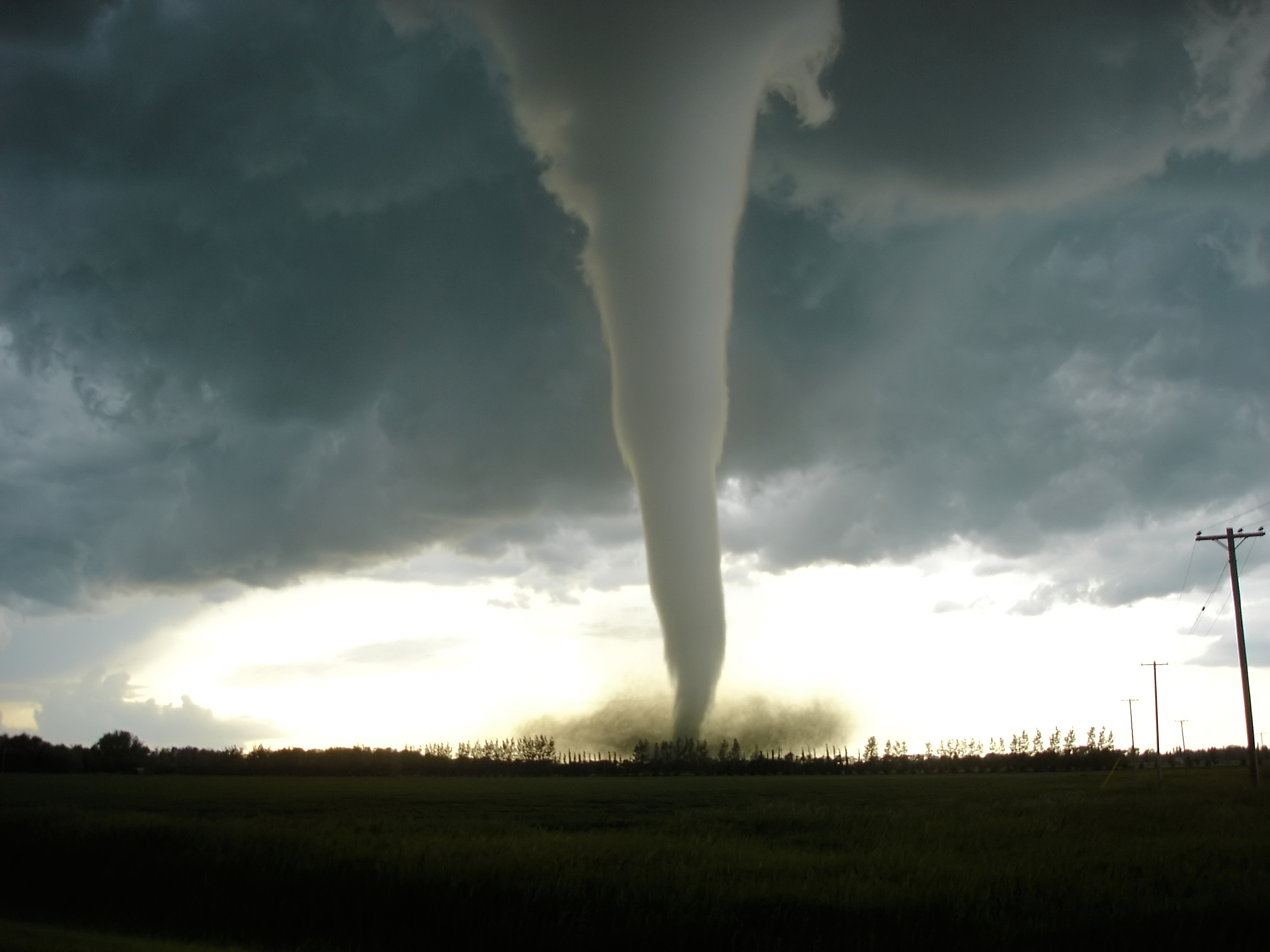University of Delaware Campus & Public Safety - What is a Tornado?
Director of Emergency Management, Mark Seifert

A tornado is a violent whirlwind that usually develops in association with a severe thunderstorm. The winds in a tornado can exceed those measured in the most intense hurricanes. Wind speeds in an intense tornado are likely to rise above 200 miles per hour. These violent winds are what make tornadoes so deadly - they can uproot and snap trees, down power lines, move or pick up cars and trucks, and destroy homes. The paths of tornadoes can be very short, or they can extend for many miles. Not surprisingly, tornado ground speeds range from nearly stationary to over 50 miles per hour. Tornadoes that form over a body of water are called waterspouts.
What is the Difference between a Tornado Watch and a Tornado Warning?
Tornado Watch - Issued to alert the public that conditions are favorable for the development of tornadoes in and close to the watch area. These watches are issued with information concerning the watch area and the length of time they are in effect.
Tornado Warning - Issued by local National Weather Service (NWS) offices to warn the public that a tornado has been sighted by storm spotters or has been indicated by radar. These warnings are issued with information concerning where the tornado is presently located and what communities are in the anticipated path of the tornado.
How to Prepare for a Tornado
Know the signs of a tornado, including a rotating, funnel-shaped cloud; an approaching cloud of debris; or a loud roar—similar to a freight train.
- Sign up for your community’s warning system. The Emergency Alert System (EAS) and National Oceanic and Atmospheric Administration (NOAA) Weather Radio also provide emergency alerts.
- UD Campus & Public Safety may send a UD Alert in the event a tornado warning impacts the campus community.
- Pay attention to weather reports. Meteorologists can predict when conditions might be right for a tornado. The link for the local NWS office in Mount Holly, New Jersey is https://www.weather.gov/phi/.
- Identify and practice going to a safe shelter in the event of high winds. Good shelters include a small, interior, windowless room on the lowest level of a sturdy building.
During a Tornado
- When a tornado warning is issued for campus, IMMEDIATELY SEEK SHELTER in the nearest well-constructed building, away from doors and windows.
- Immediately go to a safe location that you have pre-identified.
- Take additional cover by shielding your head and neck with your arms and putting materials such as furniture and blankets around you.
- Listen to EAS, NOAA Weather Radio, or local alerting systems for current emergency information and instructions. Campus & Public Safety may also sent a UD Alert message regarding weather conditions.
- Do not try to outrun a tornado in a vehicle.
- If you are in a car or outdoors and cannot get to a building, cover your head and neck with your arms and cover your body with a coat or blanket, if possible.
After a Tornado
- Keep listening to EAS, NOAA Weather Radio, University Police or local authorities for updated information.
- Call 911 or 1-302-831-UDPD if you need police, fire or paramedics.
- Stay clear of fallen power lines or broken utility lines.
- Do not enter damaged buildings until you are told that they are safe.
- Save your phone calls for emergencies. Phone systems are often down or busy after a disaster. Use text messaging or social media to communicate with family and friends.
Click this link for additional information.
Click this link for an informative video from NOAA on tornadoes and tornado safety.
